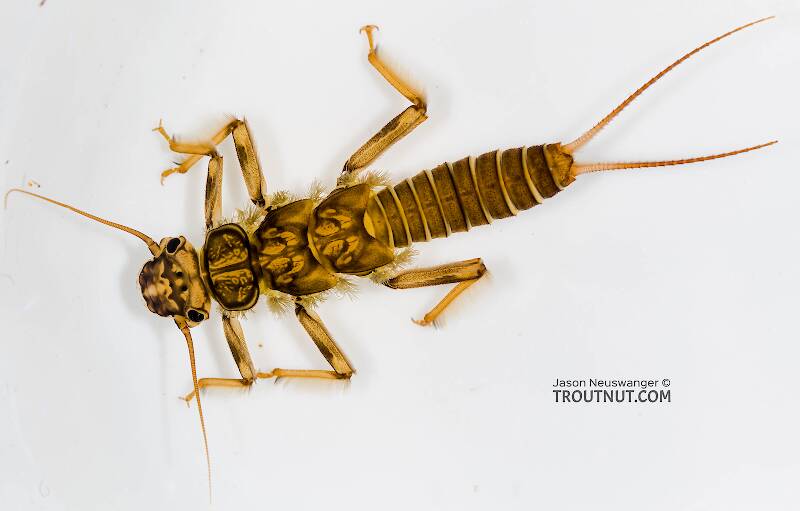
Hex Mayflies
Hexagenia limbata
The famous nocturnal Hex hatch of the Midwest (and a few other lucky locations) stirs to the surface mythically large brown trout that only touch streamers for the rest of the year.

Mayfly Species Paracloeodes lugoi
Identification
Species ID from GBIFthe Global Biodiversity Information Facility
Source: Review of continental North and Central American Paracloeodes Day 1955 (Ephemeroptera: Baetidae), including description of a new species from Minnesota, U. S. A.
Diagnosis. Male imago. Unknown. Mature nymph. 1) frons with two convergent keels, fused near clypeus (Fig. 10); 2) labrum with a pair of subapical setae near the middle that are distinguishable from others dorsal setae; 3) one row of five simple setae near distolateral margin of labrum; 4) distal margin of labrum with bifid setae; 5) distolateral margin of labrum with bifid and strong pectinate setae; 6) right mandible incisors cleft; 7) outer incisor of right mandible without vestigial denticle; 8) maxillary palp 1.40 × the length of galea-lacinia; 9) apical half of paraglossa without an abrupt decrease in width (rounded condition) (Figs. 21 and 24); 10) angle between inner margin of labial palp segment III and distal margin of segment II greater than 90 °; 11) lobe of labial palp segment II relatively angulate (Fig. 18); 12) base of labial palp segment III 0.40 × the width of labial palp segment II (Fig. 18); 13) labial palp with length of segment III 0.70 × the width of its base (Fig. 18); 14) hind wing pads absent; 15) anterior surface of forefemur with one row of blunt setae near dorsal margin (Fig. 15); 16) medial row of setae on anterior surface of forefemur absent (Fig. 15); 17) anterior surface of forefemur without row of setae near the ventral margin (Fig. 15); 18) fore tarsal claw 0.60 × the length of the tarsus, with minute denticles (Fig. 15); 19) abdominal color pattern as in Figure 2; 20) length of gills less than 2.0 × the subsequent abdominal segment (Fig. 2).


